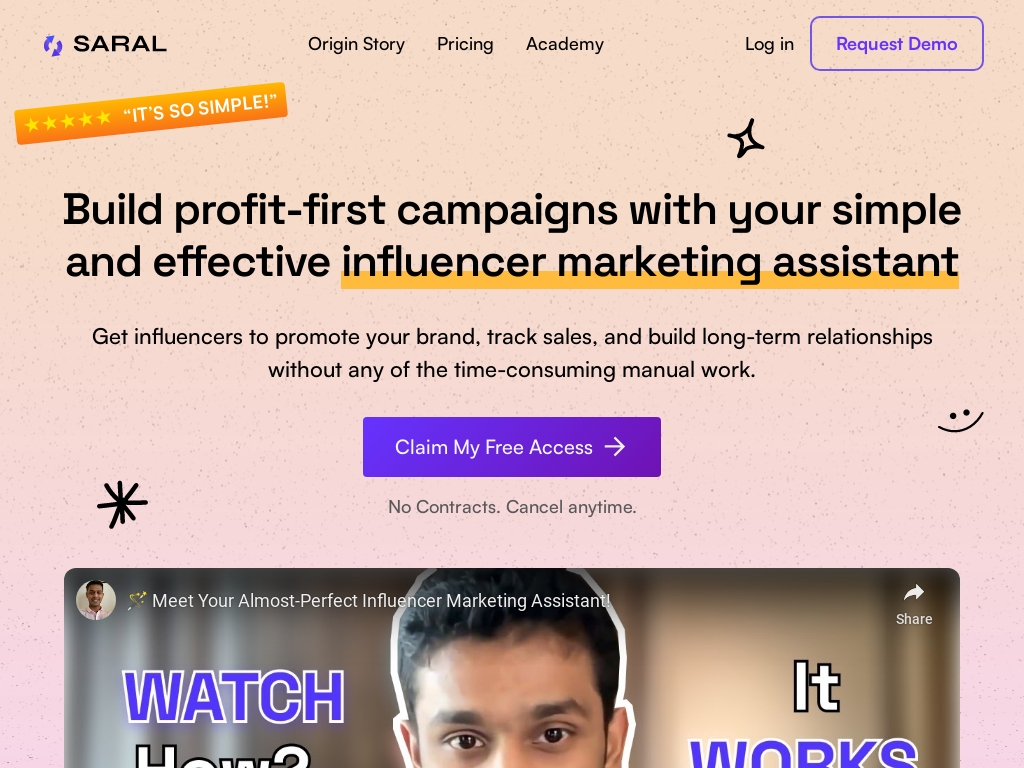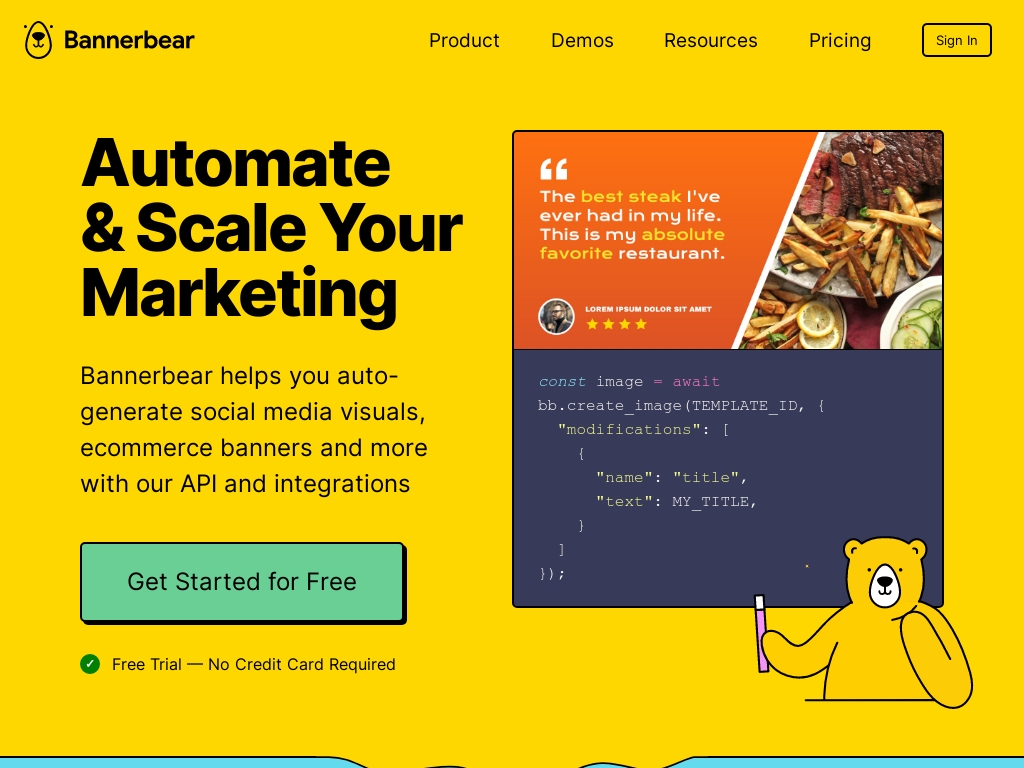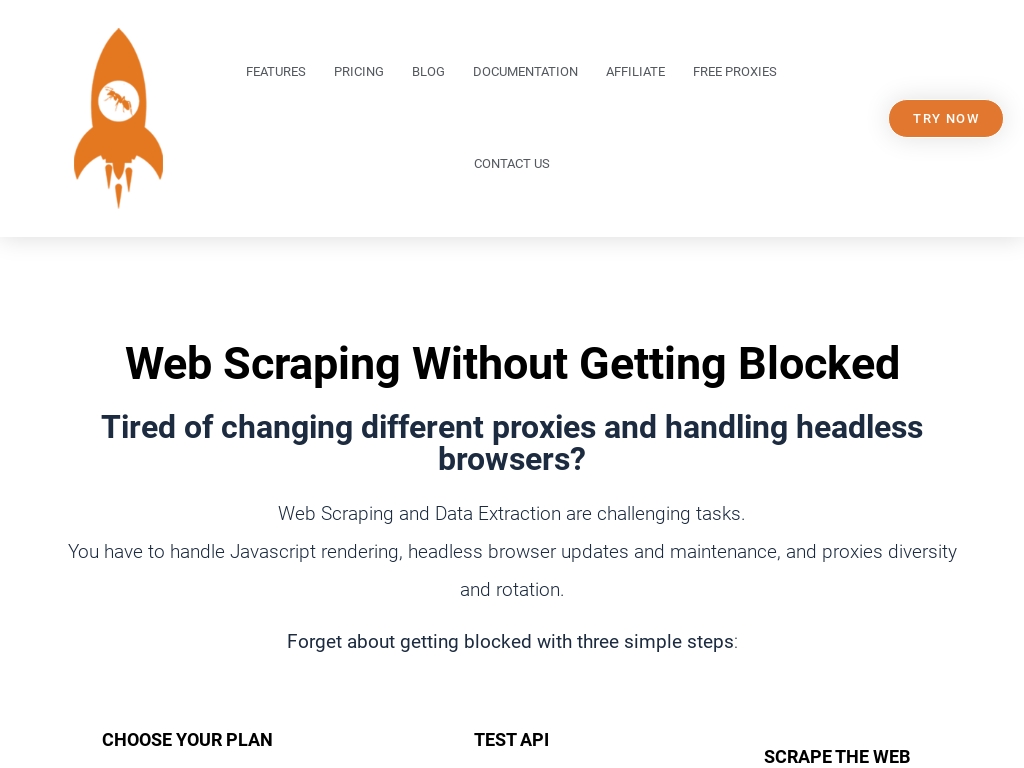
30 Saas Product Developer Business Success Stories [2025]
SaaS product is online software that uses a license to access. With cloud computing omnipresent, starting a SaaS company is a low barrier to entry idea with exponential growth potential.
Modern users recognize the SaaS cost-saving benefits and the ability to offer project collaboration. Besides, there are multiple technologies you can use to build SaaS platforms.
To build a successful SaaS product, you need database management skills, programming language, cloud computing, design & development skills.
If you decide to build a SaaS solution, start by conducting market research and competition analysis.
Before starting the development, you must choose a good app monetization model and select an appropriate technology stack.
In this list, you'll find real-world saas product developer business success stories and very profitable examples of starting a saas product developer business that makes money.
1. Superhuman ($20M/year)
Rahul Vohra, the founder of Superhuman, identified the problem of email inefficiency through personal experience and professional observations while managing his previous company, Reportive. He noticed that productivity tools like Gmail were becoming increasingly sluggish and cluttered over the years, and that plugins to enhance functionality often exacerbated these issues. This frustration was shared by many high-volume email users, including venture capitalists and founders, whom Rahul interacted with regularly.
Realizing the opportunity for a better email solution, Rahul conducted extensive informal research, asking potential users about their email pain points and needs. He also capitalized on his firsthand knowledge and experience to envision a more efficient email client. To validate his idea, he continuously gathered feedback from initial users, iterating the product based on their insights.
Essentially, the process was driven by a mix of personal annoyance with existing tools, market validation through direct user engagement, and a continuous refinement loop. Early challenges included the technical complexity of integrating advanced features into a seamless user experience, which Rahul overcame by assembling a talented team and paying meticulous attention to design and performance. This iterative approach ultimately helped shape Superhuman into a tool that significantly enhances email productivity.
How much money it makes: $20M/year
How many people on the team: 130

Discover how Rahul Vora took Superhuman from idea to $20M/year by solving email inefficiency with a high-speed, user-focused interface, securing $800K in seed funding, conducting 700+ user interviews, and leveraging viral growth strategies.




2. Balsamiq ($6.6M/year)
Balsamiq Wireframes, a low-fidelity wireframing tool, was founded by Giacomo "Peldi" Guilizzoni in 2008. The idea for the tool came from Peldi's experience working at Adobe, where he realized the need for a simple sketching tool that could be used by any contributor in product meetings. With a focus on constant learning and improvement, Balsamiq has grown into a team of 33 people with a monthly revenue of about $550,000.
How much money it makes: $6.6M/year
How many people on the team: 29


How Balsamiq became a $550k/month company through staying focused on simplicity and taking care of their team and community.




3. MeetEdgar ($4M/year)
Laura Roeder, the founder of MeetEdgar, came up with the idea for her social media automation tool after realizing the burden of managing social media accounts and creating new content across multiple platforms. With her background in teaching social media marketing and her own online course business, she saw the need for a tool that could handle the grunt work of social media management. By validating the idea through her course, she decided to create MeetEdgar and launched the software in 2014.
How much money it makes: $4M/year
How many people on the team: 11


MeetEdgar, a bootstrapped social media automation tool founded in 2014 by Laura Roeder, has grown to $4 million in annual recurring revenue and more than 5,000 customers, with a team size of two dozen, achieved through content marketing, social media marketing, and organic search.




4. Pointerpro ($3.44M/year)
Stefan Debois, an engineer and 15-year consultant, transformed a fun iPad quiz he designed for his daughter's birthday into Pointerpro, a SaaS platform now generating $287K MRR and used by clients in over 65 countries, including Deloitte and Meta.
How much money it makes: $3.44M/year
How many people on the team: 28


Pointerpro founder Stefan Debois built a software platform for consultants that has achieved a monthly recurring revenue of $287,000 and annual growth of over 30%, with customers in over 65 countries, including Deloitte, Adobe, and AstraZeneca.




5. UserGuiding ($2.4M/year)
Osman and his co-founder Muhammet started UserGuiding after a failed search for a business model in San Francisco. They had the skills, time, and money, but no idea until they analyzed a difficult-to-use product they were offered a job for and realized they could build a better user onboarding tool. They received positive feedback from experienced SaaS founders and quickly developed a prototype, making their first sale to Mobile Action founder Aykut. Within their first month, they made $2,000 and launched on Product Hunt, gaining more customers and attending SaaStr Annual 2018 with Aykut's gift of tickets.
How much money it makes: $2.4M/year
How much did it cost to start: $200K
How many people on the team: 30


UserGuiding is a SaaS product that has attracted 73 subscribers, 5,000 sign-ups from 92 countries, and 4 million end users, with a monthly recurring revenue that has increased from $413 to $9,400 in the past 14 months.




6. Studio Ninja ($1.8M/year)
Chris Garbacz, a professional wedding photographer, came up with the idea for Studio Ninja after experiencing various challenges in his photography business, including forgetting his camera bag on a wedding day. He realized the need for a user-friendly and comprehensive solution to manage his leads, clients, contracts, and invoices, leading him to create Studio Ninja, the world's most user-friendly photography business management app. With 7,000 active subscribers and monthly recurring revenue of $150,000, Studio Ninja has become a successful tool for photographers worldwide.
How much money it makes: $1.8M/year
How much did it cost to start: $75K
How many people on the team: 13

Studio Ninja is a photography business management app that has achieved 6 years of success, with 7,000 active paying subscribers and monthly recurring revenue of $150,000, thanks to co-founder Chris Garbacz's experiences and failures as a wedding photographer and serial entrepreneur.




7. Exto.io ($1.15M/year)
market research and validation before launching our product. We assumed that the demand would be there based on our own beliefs and experiences in the industry, but it turned out that we needed to make adjustments and improvements based on customer feedback. This taught us the importance of listening to our customers and constantly iterating on our product to meet their needs.
How much money it makes: $1.15M/year
How much did it cost to start: $80K
How many people on the team: 10


Exto.io's CEO and founder shares how they grew their flagship product, Recom.ai, into a full-fledged marketing tool with a $96K monthly turnover, attracting a diverse range of customers from small mom-and-pop shops to enterprise companies using a performance marketing approach and prioritizing customer feedback.




8. AiFA Labs ($1.04M/year)
While executing an SAP implementation, Harish Mandadi saw firsthand the inefficiencies of traditional software development. This realization propelled him to invest his savings and two decades of IT experience to launch AiFA Labs in 2021, now boasting a global team of 250+ professionals.
How much money it makes: $1.04M/year
How many people on the team: 158


Discover how AiFA Labs evolved into a global IT solutions powerhouse with a team of over 250 professionals and flagship AI platform "Cerebro" that has revolutionized software development across multiple industries, all started with a modest $500,000 self-funded investment.




9. Choicely ($840K/year)
Kaius Meskanen, founder of Choicely, came up with the idea for his business while playing around with SMS and voice call voting during a TV show. Realizing the need for more user-friendly engagement tools, he founded Choicely in 2015 and later pivoted to focus on building a mobile app builder that enables businesses to easily create high-quality mobile apps. With $70,000 monthly revenue and a client list that includes ITV Studios and the International Judo Federation, Choicely has experienced rapid growth and success in the media, sports, and entertainment industries.
How much money it makes: $840K/year
How much did it cost to start: $1M
How many people on the team: 15


Choicely is a no-code app builder that offers a simple, fast, and affordable platform for companies to build and maintain high-quality mobile apps, bringing in a monthly revenue of $70,000 with clients being leaders in media, sports & entertainment.




10. Songstats ($1.74M/year)
Oskar Eichler, co-founder of Songstats, came up with the idea for his business while working as a label manager and DJ in Shanghai. Being involved in the music industry, he recognized the value of data analytics for artists and record labels and wanted to provide a platform that aggregated insights across various music services. After teaming up with his co-founders, they built Songstats and now have over 6,000 customers generating almost $1 million in annual recurring revenue.
How much money it makes: $1.74M/year
How much did it cost to start: $400K
How many people on the team: 10


Songstats is a music data analytics SaaS platform that aggregates insights across 14 different music services, approaching $1 million in annual recurring revenue and growing its team of music lovers, ultimate frisbee players, and close friends that came together in Bali, Indonesia with a shared vision of launching their startup.




11. Widebundle ($660K/year)
He used Shopify Facebook Groups and communities to read people’s problems and questions, add comments, and start conversations. It’s a long job that only a few people want to do, but it works.
At some point, Matt found 3 people who wanted the same thing but it didn’t exist in the Shopify App Store. They wanted features from a bundled app that didn’t exist. And if 3 people want it, maybe there are more.
How much money it makes: $660K/year
How much did it cost to start: $300
How many people on the team: 6


WideBundle is a Shopify App founded in May 2020, that has grown to making over $40,000 monthly, with 5 people working full-time, and helps Shopify merchants create bundles and offers to increase their average order value.




12. SARAL ($600K/year)
Yash Chavan, founder of SARAL, pivoted from running a marketing agency to creating an influencer relationship management platform after managing influencer programs manually for over 10,000 influencers. Frustrated by existing expensive and outdated tools, he pre-sold the idea to five early adopters, validating the market need and securing initial funding.
How much money it makes: $600K/year
How much did it cost to start: $25K
How many people on the team: 8


This case study is about SARAL, a bootstrapped influencer relationship management platform for E-commerce businesses that has over 200 paying brands and works with over 13,000 influencers, offering users everything they need to succeed with influencer marketing.




13. Bannerbear ($600K/year)
Jon worked as a designer and programmer for over two decades. In his role as a designer, he focused on developing various products and banners for marketing teams. The idea for Bannerbear stemmed from his desire to streamline the time-consuming design process.
How much money it makes: $600K/year
How much did it cost to start: $500


Bannerbear is an API tool revolutionizing marketing automation, founded by Jon Yongfook Cockle, generating an impressive $600K/year and offering pricing plans from $49 to $299, with a growth strategy focusing on community engagement and customer recommendations.




14. eWebinar ($600K/year)
Melissa Kwan, co-founder and CEO of eWebinar, came up with the idea for the business after experiencing the pain of having to run the same webinar over and over again for her previous enterprise SaaS startup. Recognizing the need for a scalable webinar automation solution, Melissa decided to create eWebinar, a platform that turns any video into an interactive webinar that can be set on a recurring schedule or made available on demand. With customers ranging from solopreneurs to publicly traded companies, eWebinar has achieved an MRR of around $50k and continues to focus on delivering the best product and customer experience.
How much money it makes: $600K/year
How much did it cost to start: $500K
How many people on the team: 0


Melissa Kwan, CEO of eWebinar, discusses how she identified the pain point of running the same webinar over and over again, leading her to build an automated webinar solution, with a current MRR of $50k and a focus on word-of-mouth marketing.




15. Truein ($480K/year)
Ankit Tanna, the founder of Truein, came up with the idea for his business after realizing the pain points in attendance management for contractual and remotely deployed staff. He noticed that existing solutions lacked controls, transparency, and employee experience, so he leveraged AI and face recognition technology to create Truein. The business is currently generating an impressive $40,000 in monthly recurring revenue (MRR).
How much money it makes: $480K/year
How much did it cost to start: $50
How many people on the team: 20


Truein is a face recognition-based attendance solution that uses AI technology to address attendance use cases for contractual and distributed staff, boasting an MRR of $40,000 and targeting low and medium skill enterprise customers.




16. Document360 ($408K/year)
Saravana Kumar, founder of Document360, came up with the idea for the software as a service knowledge base while searching for good documentation tools for their existing enterprise products. Realizing the lack of a suitable tool for SaaS businesses, Saravana developed the idea into a viable project and eventually launched Document360, which has since been rated the #1 Knowledge base product by Gartner Digital Markets.
How much money it makes: $408K/year
How many people on the team: 200


Kovai.co, a bootstrapped SaaS startup founded by Saravana Kumar, has grown to over 200 employees with $10M in ARR and has developed numerous products including Document360, which has been rated the #1 Knowledge base product by Gartner Digital Markets, and their goal is to generate $30M ARR within the next 3 years and become a SaaS Unicorn by 2030.




17. CLOSEM ($360K/year)
Richard Miles, co-founder of CLOSEM, came up with the idea for the business after realizing the missed opportunities for follow-up in his own experiences with service providers. He reached out to his friend and co-founder, Laura Betterly, who loved the idea and saw the potential. Together, they created CLOSEM, a software tool that helps entrepreneurs and small business owners automate the process of following up with leads and increasing sales.
How much money it makes: $360K/year
How many people on the team: 1


CLOSEM is an AI-powered software tool that helps entrepreneurs and small business owners automate the time-consuming work of following up with leads, prospects, and customers, and increasing sales, grossing around $200,000 this year and confidently targeting $12MM next year.




18. Bunnyshell ($300K/year)
Alin Dobra, the CEO and Co-founder of Bunnyshell, came up with the idea for his business while working as a CTO for an outsourcing development company. Facing technical challenges with servers and high costs, Alin realized there was a need for an automated cloud management solution. He and his co-founder launched Bunnyshell in 2018, and they have since secured €750K in investment, built a team of 15 people, and generated a revenue of $12k/month.
How much money it makes: $300K/year
How many people on the team: 15


Bunnyshell CEO and co-founder Alin Dobra discusses how he created the managed cloud automation SaaS solution from scratch, securing €750,000 in investment in under 18 months, and generating $12k/month in revenue from providing services to corporate clients worldwide.




19. Xena Intelligence ($300K/year)
Akhil Nair and Dhvanish ‘Danny’ Shah started off by taking up marketing and operations projects with small businesses in the Greater Boston area. They realized that many small businesses lacked the resources to hire consultants, so they decided to build a tech platform to automate data analytics using machine learning and AI. They have already had over 50 businesses take their free assessment test and have made $23,000 in revenue within a month of launching their product.
How much money it makes: $300K/year
How much did it cost to start: $10K
How many people on the team: 3


Two friends from India co-founded a management consulting firm that offers free basic business assessment tools and paid in-depth analysis tests, with 50 businesses taking the free assessment test and 4 clients paying for the in-depth analysis test, resulting in $23,000 in revenue in just a month.




20. Data Fetcher ($276K/year)
In 2020, Andy learned about a Google Sheets add-on called API Connector, which imports your data into a simple Google sheet.
Around the same time, Andy noticed the rise in popularity of Airtable.
Since Google Sheets and Airtable were close in compatibility, Andy decided to build a similar type of data integration tool for Airtable.
Andy’s 3-step method for coming up with ideas is helpful context for understanding how he came up with the idea: - Find a platform that is already growing massively. - Look at already successful tools for more mature platforms. - Build an equivalent tool for the new platform.
How much money it makes: $276K/year
How much did it cost to start: $100
How many people on the team: 0


Data Fetcher is a no-code tool that imports data into Airtable which has reached 190 paying customers in just over a year after launch and is making $6500 in MRR, with a goal of reaching $30k+ in MRR, for aspiring founders looking to bootstrap an app to life-changing revenue as a solo founder.




21. Ora ($252K/year)
Nikolay Mihaylov, along with his co-founders Vasil Enchev and Nikolay Yanev, came up with the idea for Ora PM while working at Codemotion in 2015. As they were managing their work with existing project management systems like Trello and Slack, they realized the need for a more sophisticated system with time tracking. Unable to find a suitable solution in the market, they decided to create their own project management system, which eventually evolved into Ora.
How much money it makes: $252K/year
How much did it cost to start: $50K
How many people on the team: 5


Ora PM is a project management system that generates an average monthly revenue of $21k, and is designed for use by individuals as well as companies with big projects.




22. ScrapingAnt ($240K/year)
Oleg, a serial entrepreneur with a technical background, came up with the idea for ScrapingAnt after trying out various e-commerce projects and realizing the need for a reliable data scraping solution. He partnered with his friend Andrii, who had experience in setting up scalable infrastructures for data gathering, and together they created a simple solution based on AWS Lambdas. They launched the business on the RapidAPI marketplace and focused on content marketing and providing excellent customer support to attract and retain customers. The company has achieved profitability and continues to invest in technology and search for their "thingy" that will bring in more customers. Recently, they entered into a collaboration with software development company Codery to expand their capacity.
How much money it makes: $240K/year
How much did it cost to start: $0
How many people on the team: 2


ScrapingAnt is a web scraping service with an easy-to-integrate API, making it the ideal data extraction infrastructure solution for companies and private entrepreneurs, making a profit of $7.1K in December 2021 and actively looking for technical and non-technical content creators.




23. Mailmodo ($102K/year)
Aquibur Rahman, the founder and CEO of Mailmodo, came up with the idea for his business while working as a marketer at a fintech company. He realized the importance of email for business growth and saw the potential of AMP emails when Google announced them for the Gmail app. Seeing the gap in the market for a no-code platform that supports AMP emails, Rahman decided to create Mailmodo to help marketers improve email conversions and engagement.
How much money it makes: $102K/year
How many people on the team: 25


Mailmodo, an email marketing software that enables marketers to send app-like interactive emails, accelerated to 100k+ ARR in just five months after launching the public version in January 2021, with a focus on attracting and retaining customers through organic growth and product-led solutions.




24. Better Sheets ($100K/year)
Andrew Kamphey came up with the idea for Better Sheets while working on a web app and realizing the creative potential of Google Sheets. Seeing a gap in the market for tutorials on using Google Sheets for businesses, he launched Better Sheets with a landing page, free and paid videos, and quickly gained traction, making $2,291 in revenue in just one month.
How much money it makes: $100K/year
How much did it cost to start: $109
How many people on the team: 0
Better Sheets is a Google Sheets tutorial providing screencasts to small businesses, earning $2,291 from 134 sales in May, with sales being mainly driven by AppSumo.




25. HTMLG ($72K/year)
Ferenc Denes, the founder, started his business by developing websites and online tools that generate passive income. He came up with the idea for his online HTML editor when he was working at an internet marketing agency and needed a tool to convert Word documents to HTML. After realizing the potential of the tool, he launched it on a separate domain and it started ranking first on Google. He monetized the site with Google Ads and later launched a premium version with paid subscriptions. Now, he has over 40 websites and continues to build passive income sites.
How much money it makes: $72K/year
How much did it cost to start: $50
How many people on the team: 1


This case study is about an engineer who developed a free online HTML editor that generates a passive income of $6K per month and owns over 40 websites with a total of roughly 8-10 million monthly visitors.




26. Parcel Tracker ($72K/year)
Arthur, the co-founder of Deepfinity, came up with the idea for their internal parcel tracking software while in university after seeing the time-consuming process of logging deliveries at their student accommodation. They spent a year validating the product, built an interactive prototype, and even secured a pre-order before developing the software. With a focus on customer satisfaction and innovative sales tactics, they have steadily grown their customer base and are now experimenting with PPC advertising to attract more clients.
How much money it makes: $72K/year
How much did it cost to start: $1K
How many people on the team: 1


Deepfinity, a proptech/logistics company, has developed an internal parcel tracking software tool that's helping large buildings cope with the influx of online shopping, and has been growing 20% MoM since making its first revenue 1.5 years ago, currently making $6K/Month.




27. Freeflow ($60K/year)
Mikhiel Tareen and Nick Scavone, former employees of Okta, noticed the challenges that remote employees faced in terms of feeling disconnected from their teams. They conducted extensive research and discovered that the root cause was the lack of casual and spontaneous communication tools for remote teams. This led them to create Freeflow, a B2B software company that provides a 'virtual office' for remote teams to collaborate in a more organic and efficient manner.
How much money it makes: $60K/year
How many people on the team: 8


Freeflow, a B2B software company providing a 'virtual office' for remote teams, raised $1.7M in pre-seed funding, reduced meeting times by as much as 50%, boasts 35+ daily team conversations, and helps globally scaling firms integrate new hires and onboard into the culture.




28. SaasRock ($52K/year)
Alexandro came up with the initial idea for SaasRock after 8 years of being a developer.
He built multiple web apps using C#, Vue, .Net, and Tailwind CSS.
Alexandro felt like his web development process was too slow because of the multiple stacks he was using. He migrated my Vue2 app to Vue3, then to React, and then to Svelte to create a similar boilerplate but with different frontends.
With this in mind, he started looking for tools to speed up his web development process.
How much money it makes: $52K/year
How much did it cost to start: $500
How many people on the team: 0


Aspiring founders will learn how Alexandro Martínez built SaasRock, a powerful Remix boilerplate generating $4,380 MRR with impressive features and integrations, offering insights gleaned from launching, scaling, and effectively engaging with a community of developers.




29. Resume Maker Online ($24K/year)
Fernando Pessagno, an Argentinian Product Designer, came up with the idea for ResumeMaker.Online when his sister asked for help designing her resume and he couldn't find a user-friendly online tool. He saw an opportunity to create a simple, intuitive resume-making web app for non-tech-savvy users, and thus ResumeMaker.Online was born. Since its launch in 2018, the app has been downloaded over 700,000 times and is generating over $2,000 per month.
How much money it makes: $24K/year
How much did it cost to start: $0
How many people on the team: 0


An Argentinian Product Designer created ResumeMaker.Online, a WYSIWYG web app that has been downloaded over 700,000 times and averages more than $2,000 a month after the recently introduced v2.0.




30. FeedLetter ($480/year)
Jens Boje, a software developer and mindfulness coach from Frankfurt, Germany, came up with the idea for FeedLetter, a feedback system for newsletters, after struggling to receive feedback from his readers. He combined a voting system with a follow-up question and built a version for his own newsletter before turning it into the first version of FeedLetter. Since its launch, Twitter and word of mouth have been the major acquisition channels for attracting and retaining customers.
How much money it makes: $480/year
How much did it cost to start: $20
How many people on the team: 0


FeedLetter.co, a simple feedback system for newsletters that started as a personal app, now has 14 customers and relies on Twitter and word-of-mouth for acquiring new users, with founder Jens Boje emphasizing the importance of focusing on publishing and growing your product instead of waiting to perfect it.





Download the report and join our email newsletter packed with business ideas and money-making opportunities, backed by real-life case studies.

Download the report and join our email newsletter packed with business ideas and money-making opportunities, backed by real-life case studies.

Download the report and join our email newsletter packed with business ideas and money-making opportunities, backed by real-life case studies.

Download the report and join our email newsletter packed with business ideas and money-making opportunities, backed by real-life case studies.

Download the report and join our email newsletter packed with business ideas and money-making opportunities, backed by real-life case studies.

Download the report and join our email newsletter packed with business ideas and money-making opportunities, backed by real-life case studies.

Download the report and join our email newsletter packed with business ideas and money-making opportunities, backed by real-life case studies.

Download the report and join our email newsletter packed with business ideas and money-making opportunities, backed by real-life case studies.












